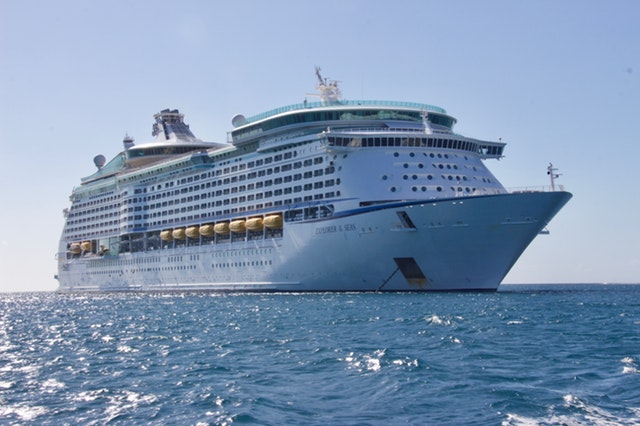With youth activist Greta Thurnberg helping to popularize the idea of “flight shaming” in Sweden, frequent travelers who are concerned about their environmental impact are wondering exactly how they can get from Point A to Point B without creating a huge carbon footprint. It’s true that flying is generally worse for the environment than taking a bus or train to and from your destination, and carpooling with friends is also a more eco-friendly option than taking to the skies. But which mode of transportation is really the worst offender? It depends on how far you’re traveling, but cruise ships just might take the top spot.
Taking a cruise seems like a fun, leisurely way to vacation—after all, once you book your ticket, you don’t really have to plan for anything else. You can chill out on the deck, visit a few different countries or cities, and rest assured knowing that the company is handling all of the nitty-gritty details. Although you’ll inevitably get to see some beautiful destinations on your voyage, the cruise industry also pollutes the waters in these port cities and waterways.

What makes cruise ships so destructive? First of all, cruise ships emit far more CO2 than cars. Cruise ships run on “bunker fuel,” which is even more toxic for the environment than gasoline—when burned, it releases sulfur and nitrogen oxide into the air, which are both harmful to the planet and human health. Furthermore, the hulls of cruise ships are coated with “anti-fouling” paint, which leaches heavy metals into the water. This can be a big problem for water quality in popular port cities—plenty of cruise ships can dock at the same time in shallow waters, increasing the concentration of heavy metals in the harbor.
Toxic water isn’t the only thing about cruise ships that harms marine life: it’s also the noise emitted by the engines. It disorients animals, and cruise ships occasionally collide with marine mammals, killing or seriously injuring them. In addition, cruise ships produce an enormous amount of waste—from sewage to wastewater to solid waste, most of which ends up in the sea. There are regulations for waste disposal, and it’s supposed to be properly treated before it’s dumped, but ships don’t always follow these rules.
It’s true that no form of long-distance travel is perfect—driving is a major contributor to overall carbon emissions, and flying also burns massive amounts of fuel. But perhaps what makes the environmental impact of cruise ships seem particularly egregious is the fact that taking a cruise is nearly always unnecessary. Unfortunately, many people in countries like the United States do not have access to a reliable public transport system, and therefore, they have no choice but to own a car and drive frequently. And yes, taking even one long flight in a year can increase your carbon footprint manifold. But even if everyone were to eschew flying for business and leisure, many people would have to book flights every once in a while in order to see their friends and family.

Cruising, on the other hand, is ultimately the pursuit of pleasure—people aren’t going on cruise ships to visit their parents for the holidays, to spend a weekend in their college roommate’s hometown, or to take part in a friend’s wedding who lives far away. They’re going to relax on a lounge chair for several days, hang out on the beach, indulge at the all-you-can-eat buffets onboard, shop in tropical port cities, and drink fruity cocktails while getting a tan. The good news? We can enjoy all of these activities without setting foot on a cruise ship.
Lately, the environmental impact of tourism has been under heavy scrutiny, and those of us who want to see the world without contributing to environmental destruction are being forced to rethink some of our habits. We might conclude that we should cut down on flying, take the bus or train whenever possible, or plan more weekend road trips with friends rather than jetting off to foreign destinations. But when it comes to going on cruises, it’s difficult to see how this industry could really maintain a place in a “greener” society. Cruising can be a very convenient way to hop from one island to another, or to explore regions of the world that might be difficult to travel around on your own, like the Arctic. But it’s time to put our commitment to environmentalism above convenience. Cruising may be fun and feel luxurious, but it’s one of the luxuries that we will probably have to give up to save our oceans.
Also by Jane: Are You Drinking Plastic? This Study On Tea Bags Will Make You Switch To Loose Leaf
Electric Cars Won’t Save The Planet–And Their Ecological Cost Is Shockingly High
Get more like this—Sign up for our daily inspirational newsletter for exclusive content!
__
Photo: Pexels




